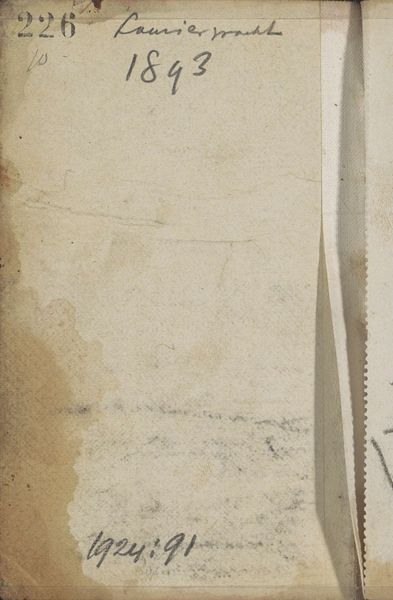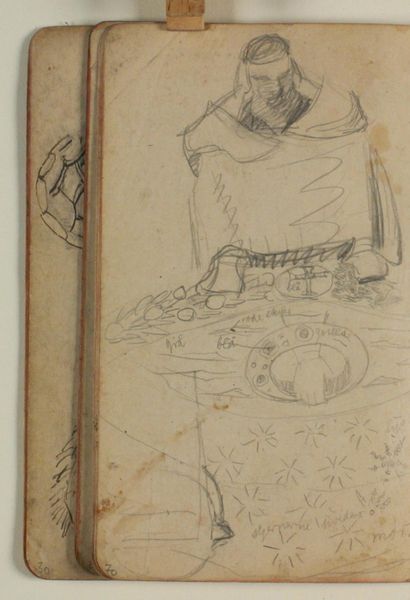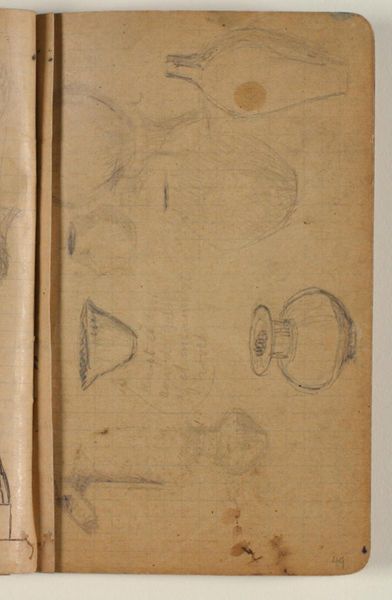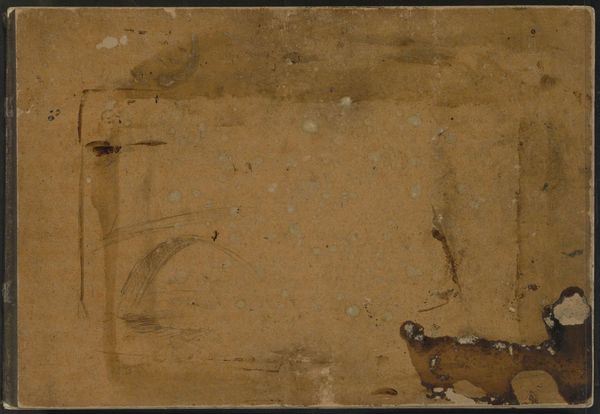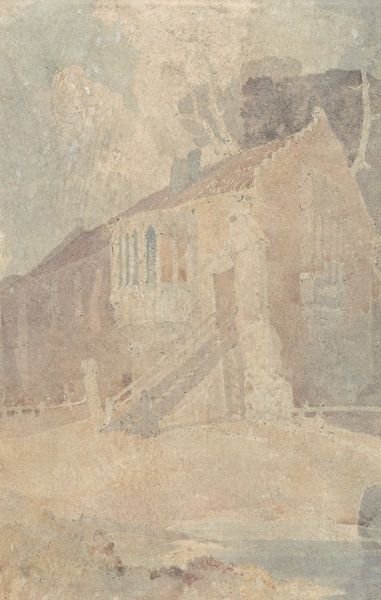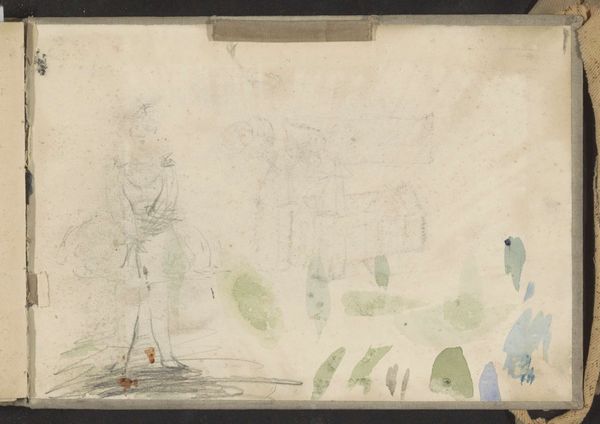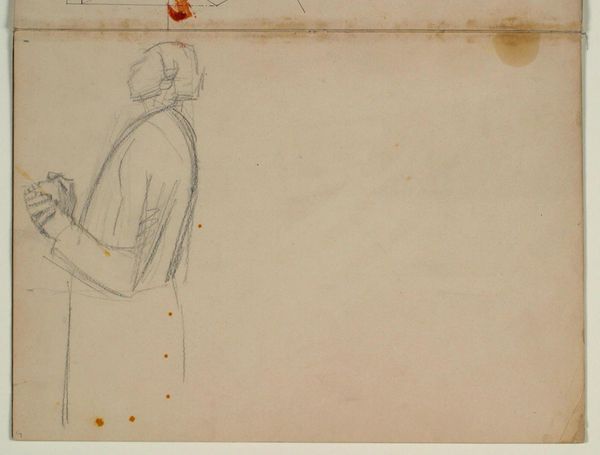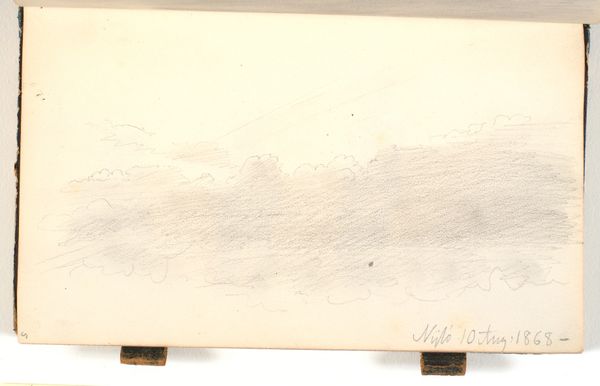
painting, oil-paint
#
acrylic
#
painting
#
oil-paint
#
painted
#
figuration
#
oil painting
#
genre-painting
#
watercolor
#
realism
Copyright: Public domain
This still life of a ‘Kitchen Shelf’ was painted by George Harvey sometime in the mid-19th century. The painting, with its neat row of domestic objects, has an appealing and homey quality. But look closely at how Harvey has arranged these objects. The painting presents a careful ordering of class identity. The array of gleaming metal objects – teapots, coffee pots, sugar bowls – speaks to the increasing material wealth of the American middle class in this period. Their careful arrangement suggests an aspiration to good taste and a self-conscious domesticity. A candlestick stands beside the pots, possibly an indication of elevated education, literacy, and class. Look at the objects that hang below the shelf – an axe and tinderbox. These are items from the domestic space of the working class. Harvey is contrasting social spheres and perhaps suggesting his belonging to the more refined shelf space. The art historian’s role is to understand such visual codes and cultural references and analyze how artistic meaning always depends on social context.
Comments
No comments
Be the first to comment and join the conversation on the ultimate creative platform.
